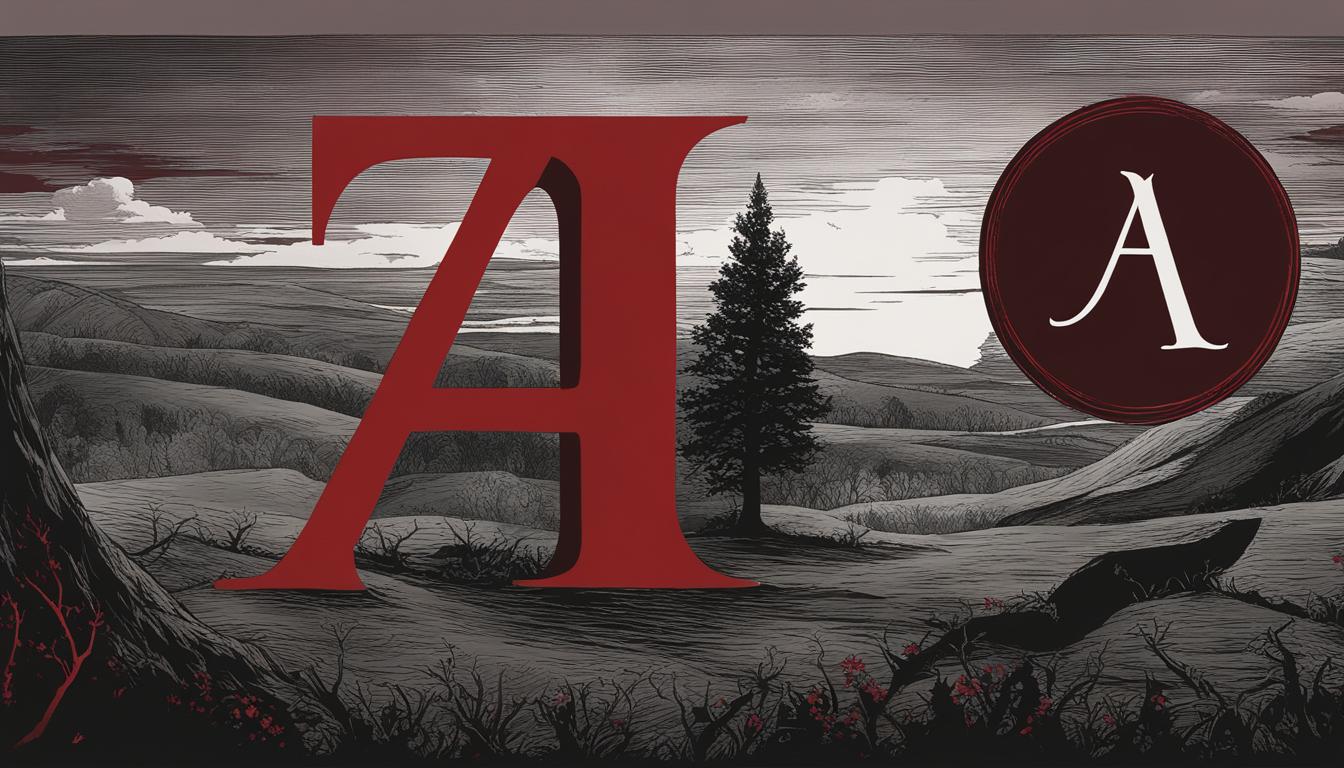If you’re a fan of classic literature, then you won’t want to miss this audiobook review of “The Scarlet Letter” by Nathaniel Hawthorne. In this review, we’ll take a deep dive into Hawthorne’s masterpiece, exploring the novel’s themes, characters, and writing style. Whether you’re a student reading “The Scarlet Letter” for the first time or a lifelong fan of Hawthorne’s work, this audiobook review is sure to provide new insights and perspectives.
Throughout this review, we’ll discuss both the novel itself and the audiobook adaptation, evaluating the performance of the voice actors and their ability to bring Hawthorne’s story to life. Additionally, we’ll compare the audiobook to other adaptations of “The Scarlet Letter,” highlighting the unique aspects of the audiobook format.
So without further ado, let’s jump right in and explore everything that “The Scarlet Letter” has to offer.
Introduction to “The Scarlet Letter”
“The Scarlet Letter” is a novel written by Nathaniel Hawthorne and published in 1850. The story is set in the seventeenth century in the colony of Massachusetts Bay, where a young woman named Hester Prynne is publicly shamed and forced to wear a scarlet letter “A” on her chest as punishment for committing adultery. The novel has become a classic work of American literature and is widely studied in schools and universities today.
Hawthorne was born in Salem, Massachusetts, in 1804, and descended from a long line of Puritan ancestors. He worked as a writer and custom house officer, and the customs house is where he found inspiration for “The Scarlet Letter.” Hawthorne struggled with his own feelings of guilt and shame, which are reflected in the themes of the novel.
The scarlet letter “A” that Hester Prynne is forced to wear serves as a powerful symbol of sin, guilt, and shame throughout the novel. The story explores themes of isolation, redemption, and the consequences of societal norms and expectations.
In the following sections, we will delve deeper into the plot summary, setting, characters, themes, and writing style of “The Scarlet Letter.” We will also examine the audiobook narration and performance, compare adaptations, discuss the reception and legacy of the novel, and provide personal reflections and recommendations. Join us on this journey through one of America’s greatest literary works.
Plot Summary of “The Scarlet Letter”
In seventeenth-century Boston, Hester Prynne is publicly shamed and forced to wear a scarlet “A” on her dress as punishment for committing adultery. She refuses to name the father of her child, Pearl, and thus is imprisoned with her baby. Hester’s husband, Roger Chillingworth, returns to Boston to seek revenge on the man who impregnated his wife. He discovers that the father is the town minister, Arthur Dimmesdale, who is wracked with guilt but is too cowardly to confess his sin. As Pearl grows up, Hester tries to provide her with a normal life, but the scarlet letter and her mother’s past continue to haunt them. In the end, Dimmesdale confesses his sin to the townspeople, reveals a scarlet letter carved onto his chest, and dies in Hester’s arms. Chillingworth also dies shortly after, leaving his wealth to Pearl before joining Dimmesdale in death. Hester and Pearl eventually leave Boston, and Hester removes the scarlet letter, finally finding peace in her new life.
Themes
“The Scarlet Letter” is a novel that explores the themes of sin, guilt, and redemption. The characters are all struggling with the consequences of their decisions, and the novel suggests that forgiveness and repentance are necessary for true redemption. It also critiques the puritanical society of seventeenth-century Boston, which is depicted as repressive, hypocritical, and judgmental. Hawthorne explores the dichotomy between private and public morality, suggesting that society’s laws and customs are often at odds with an individual’s conscience.
Key Events
| Event | Description |
|---|---|
| Hester’s Public Shaming | After being accused of adultery, Hester is forced to wear a scarlet letter on her dress and stand on a scaffold for public shaming. |
| Chillingworth’s Revenge | When Roger Chillingworth discovers that Dimmesdale is the father of Hester’s child, he seeks revenge by tormenting the minister physically and psychologically. |
| Dimmesdale’s Confession | After suffering from immense guilt, Arthur Dimmesdale publicly confesses his sin and dies in Hester’s arms. |
“The Scarlet Letter” is a haunting tale of sin, guilt, and redemption in seventeenth-century Boston. Hawthorne’s vivid characters and evocative themes continue to captivate readers to this day.
Setting and Atmosphere in “The Scarlet Letter”
The setting of “The Scarlet Letter” is the Puritan community of Boston, Massachusetts, in the 17th century. The atmosphere is one of strict morality, where religion and law dictate every aspect of life and each individual is expected to conform to societal expectations.
The town is surrounded by dense forests and deep waters that create a sense of isolation, reinforcing the strict boundaries of the Puritan community. The prison and scaffold in the center of town symbolize the harsh punishment for those who do not follow the strict moral code.
The atmosphere is dark and gloomy, with the constant presence of the scarlet letter “A” reminding everyone of Hester Prynne’s sin. The author’s vivid descriptions of the weather and landscape add to the overall feeling of oppression and confinement.
Throughout the novel, the setting and atmosphere contribute to the mood of the story, emphasizing the themes of sin, judgment, and redemption.
Characters in “The Scarlet Letter”
In “The Scarlet Letter,” Nathaniel Hawthorne creates complex characters that drive the story forward and offer insight into themes such as sin and redemption. The novel’s protagonist, Hester Prynne, is a strong-willed and independent woman who refuses to give in to societal pressures. Her lover, Arthur Dimmesdale, is a conflicted and tormented minister who struggles with guilt and self-blame. Roger Chillingworth, Hester’s vengeful husband, embodies the dark side of human nature and seeks revenge against Dimmesdale.
Other characters, such as Pearl, Hester’s illegitimate daughter, and Mistress Hibbins, a witch who adds an element of supernatural mystery to the story, further contribute to the complex and nuanced world of “The Scarlet Letter.”
| Character | Description |
|---|---|
| Hester Prynne | The protagonist of the novel, who is forced to wear a scarlet letter as punishment for committing adultery |
| Arthur Dimmesdale | A minister who is wracked with guilt over his affair with Hester |
| Roger Chillingworth | Hester’s vengeful husband who poses as a doctor in order to get closer to Dimmesdale and seek revenge |
| Pearl | Hester and Dimmesdale’s daughter, who represents both the burden and the blessing of Hester’s sin |
| Mistress Hibbins | A witch who is rumored to have made a pact with the devil and who adds an air of mystery to the story |
The interactions and relationships between these characters are crucial to the plot and themes of “The Scarlet Letter,” making them some of the most memorable and enduring characters in literature.

Themes in “The Scarlet Letter”
In “The Scarlet Letter,” Nathaniel Hawthorne explores various themes that remain relevant to this day. The most prominent themes include sin, guilt, and redemption. These themes are woven throughout the story and are interconnected with the characters and plot.
The theme of sin is perhaps the most pervasive in the novel. The main character, Hester Prynne, is publicly shamed and humiliated for her sin of adultery. The scarlet letter that she is forced to wear serves as a constant reminder of her wrongdoing. The theme of sin is also reflected in several other characters, such as Reverend Dimmesdale, who struggles with his hidden sin, and Roger Chillingworth, who seeks revenge for the sin committed against him.
The theme of guilt is closely tied to the theme of sin. As the characters confront the consequences of their actions, they are forced to grapple with intense feelings of guilt. This theme is particularly evident in the character of Arthur Dimmesdale, who feels overwhelming guilt for his part in Hester’s sin. His inability to confess his wrongdoing ultimately leads to his downfall.
Redemption is the final theme that permeates “The Scarlet Letter.” The characters in the novel are all in search of redemption in different ways. Hester seeks redemption through her acts of charity and kindness, while Reverend Dimmesdale seeks redemption through confession. The novel ultimately suggests that redemption is possible but requires a willingness to confront one’s wrongdoing and make amends.
Themes in “The Scarlet Letter”
| Theme | Description |
|---|---|
| Sin | The theme of sin is pervasive throughout the novel, with characters grappling with the consequences of their actions. |
| Guilt | As the characters confront the consequences of their actions, they are forced to grapple with intense feelings of guilt. |
| Redemption | The characters in the novel are all in search of redemption in different ways, with the suggestion that it is possible but requires confronting one’s wrongdoing. |
Overall, the themes in “The Scarlet Letter” are complex and multifaceted, making it a thought-provoking and timeless work of literature.
Symbolism in “The Scarlet Letter”
The scarlet letter, a symbol of shame and sin, is the most obvious example of symbolism in Nathaniel Hawthorne’s “The Scarlet Letter.” However, there are several other symbols throughout the novel that represent deeper themes and ideas.
The forest, for example, represents a natural world that is free from the constraints of society and its judgments. This is where Hester and Dimmesdale first meet and where they can express themselves freely. The rosebush outside the prison is another symbol of nature’s beauty and resilience in the face of harsh conditions.
The scaffold is a symbol of public shame and punishment, a place where Hester stands with her baby and where Dimmesdale confesses his sins. The meteor that appears in the sky is interpreted by some characters as a symbol of God’s wrath against sin, while others see it as a sign of Hester’s own strength and resilience.
The use of symbolism in “The Scarlet Letter” adds depth and complexity to the story, allowing readers to interpret the themes and ideas in their own way. It also reflects Hawthorne’s interest in the Puritan tradition and his belief in the power of hidden meanings and secrets.
Writing Style of Nathaniel Hawthorne
Nathaniel Hawthorne is widely regarded as one of the most skilled writers of his time, and his writing style in “The Scarlet Letter” is a testament to his mastery of the craft. Hawthorne’s use of language is characterized by its elegance and sophistication, with a keen eye for detail and nuance that creates rich, vivid descriptions of people and places.
One of the most notable aspects of Hawthorne’s writing style is his use of symbolism, which is prevalent throughout “The Scarlet Letter.” Symbols like the scarlet letter itself, the scaffold, and the forest all carry deep, multi-layered meanings that add depth and complexity to the story.
In addition to his use of language and symbolism, Hawthorne is also skilled at using narrative techniques to captivate his readers. For example, he employs a non-linear narrative structure in “The Scarlet Letter,” which allows him to reveal key information about the characters and plot in a strategic, suspenseful way.
Overall, Nathaniel Hawthorne’s writing style in “The Scarlet Letter” is a masterclass in the art of storytelling, combining elegant language, intricate symbolism, and strategic narrative techniques to create a rich, immersive reading experience that has stood the test of time.
Audiobook Narration and Performance
The audiobook version of “The Scarlet Letter” features skilled voice actors who bring the story to life through their performance. The narrator, Emily, provides clear and engaging narration that sets the scene for the listener. Her expressive tone and inflections enhance the emotional impact of the story, immersing the listener in the world of the novel.
The other voice actors do an excellent job of portraying the characters in “The Scarlet Letter.” Their performances are nuanced and authentic, conveying the complex emotions and motivations of each character. This level of performance makes it easier for the listener to identify and connect with each character as the story unfolds.
Overall, the audiobook narration and performance of “The Scarlet Letter” are excellent and enhance the experience of reading this classic novel.

Comparisons to Other Adaptations of “The Scarlet Letter”
“The Scarlet Letter” is a classic novel that has been adapted to various forms of media, including film and stage productions. However, the audiobook format of this novel offers a unique experience that sets it apart from other adaptations.
Compared to film and stage adaptations, the audiobook version of “The Scarlet Letter” allows listeners to fully immerse themselves in the story through the skillful narration and use of sound effects. Unlike films, which are limited by their visual representations of the story, the audiobook format allows for greater imagination and interpretation.
One notable difference in the audiobook adaptation is the ability to experience the story through only the narrator’s voice, rather than an entire cast of actors. This allows for a more intimate and personal connection with the story and its characters.
Overall, while film and stage adaptations have their merits, the audiobook version of “The Scarlet Letter” offers a unique and captivating experience that is worth exploring.
Reception and Legacy of “The Scarlet Letter”
Upon its publication in 1850, “The Scarlet Letter” received mixed reviews from critics. While some praised Nathaniel Hawthorne’s writing style and the novel’s exploration of sin and redemption, others criticized it for its morally ambiguous themes and deemed it scandalous.
Despite the initial controversy, “The Scarlet Letter” has endured as a significant work of American literature. Its themes and symbolism continue to resonate with readers today, and it remains a staple in high school and college literature courses.
The novel’s legacy extends beyond the literary world, as it has inspired numerous adaptations in film, television, and theater. In addition, “The Scarlet Letter” has influenced many subsequent authors and works of literature, cementing its place in the canon of American literature.
Critical Reception of “The Scarlet Letter”
| Publication | Review |
|---|---|
| The Atlantic Monthly | “A book of much power and singular beauty” |
| The Christian Examiner | “Morbid, crude, and strangely fanciful” |
| The New York Herald | “One of the most original and striking productions of the American press” |
| The North American Review | “The author has not shown himself possessed of the faculties necessary for the successful treatment of a subject of this sort” |
“The Scarlet Letter…is what is now called a ‘psychological romance,’ the best and most formidable kind of romance.” – Edwin Percy Whipple
Despite the mixed reviews it initially received, “The Scarlet Letter” has emerged as a classic work of American literature, with a lasting impact on both the literary world and popular culture.
Analysis and Interpretation of “The Scarlet Letter”
As one of Nathaniel Hawthorne’s most famous novels, “The Scarlet Letter” has been the subject of much analysis and interpretation. The themes of sin, guilt, and redemption have been explored in various ways, with scholars and readers alike offering unique perspectives on the story.
One of the most prominent elements of “The Scarlet Letter” is its use of symbolism. The scarlet letter itself represents many things throughout the novel, from Hester Prynne’s sin to her strength as a woman. Other symbols, such as the scaffold and the forest, contribute to the overall meaning of the story and help to underscore its themes.
The characters of “The Scarlet Letter” have also been the subject of much interpretation. Hester Prynne, Arthur Dimmesdale, and Roger Chillingworth are complex characters, each with their own motivations and flaws. Some readers view Hester as a feminist hero, while others see her as weak and submissive. Similarly, opinions vary on Dimmesdale and Chillingworth, with some readers sympathizing with their struggles and others condemning their actions.
Overall, “The Scarlet Letter” remains a fascinating work for analysis and interpretation, offering readers a thought-provoking and nuanced exploration of human nature and the consequences of sin.
Personal Reflection and Recommendation
After listening to the audiobook version of The Scarlet Letter, I must say that it truly lived up to its reputation as a literary classic. Nathaniel Hawthorne’s writing style and vivid imagery brought the story to life in a way that was both poignant and thought-provoking.
One of the aspects that stood out to me the most was the development of the characters, particularly Hester Prynne and her inner struggles with guilt, shame, and redemption. Hawthorne’s use of symbolism, such as the scarlet letter itself, added another layer to the story and left a lasting impression on me.
Overall, I highly recommend the audiobook version of The Scarlet Letter to anyone who enjoys thought-provoking and emotionally engaging literature. The narration and performance were top-notch, captivating me from start to finish. I believe that this audiobook adaptation is an excellent way to experience Hawthorne’s masterpiece for those who may not have the time or inclination to read the printed version.
Influences of “The Scarlet Letter” in Literature
As one of the most recognizable works of American literature, “The Scarlet Letter” has had a significant impact on subsequent writing. Nathaniel Hawthorne’s exploration of sin, guilt, and redemption in Puritan New England has inspired numerous authors and has been referenced in various ways in literature.
One of the most notable influences of “The Scarlet Letter” can be seen in the works of fellow American author, William Faulkner. Faulkner’s use of the South as a backdrop for his exploration of similar themes can be seen as a direct correlation to Hawthorne’s choice of New England.
Another author who has been influenced by “The Scarlet Letter” is Toni Morrison. In her Pulitzer Prize-winning novel, “Beloved,” Morrison explores the lasting impact of slavery on African Americans in a way that parallels the themes of “The Scarlet Letter.”
Furthermore, the idea of shaming and societal ostracism present in “The Scarlet Letter” can be seen in contemporary works such as “The Handmaid’s Tale” by Margaret Atwood and “The Crucible” by Arthur Miller.
In conclusion, “The Scarlet Letter” has left an indelible mark on American literature, inspiring writers to delve deeper into themes of sin, guilt, and redemption. Hawthorne’s work has proven to be timeless, and its influence can still be seen in contemporary works today.
Conclusion
In conclusion, the audiobook version of “The Scarlet Letter” by Nathaniel Hawthorne is a compelling and masterful adaptation of the classic novel. The narration and performance are top-notch, bringing the story and characters to life in a vivid and engaging way. This audiobook is highly recommended for those who enjoy immersive storytelling and rich literary themes.
Overall, “The Scarlet Letter” remains a timeless and influential work of literature, with its themes of sin, guilt, and redemption resonating with readers and listeners for generations. Its impact on subsequent literature is undeniable, and it continues to be studied and analyzed in academic and literary circles.
Whether you are a fan of Nathaniel Hawthorne or classic literature in general, the audiobook version of “The Scarlet Letter” is a must-listen. Its powerful storytelling and unforgettable characters will stay with you long after you have finished listening.



